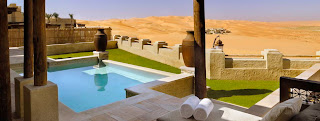Presenting Information
Task sheet
You will be provided with a list of some events, with brief descriptions, taking place around the world during December. You may know of some more and may like to include those too or share them with colleagues.
1. Consider ways to make this list more attractive and so more likely to be read and have some impact. Find a more suitable graphic or image to accompany or illustrate the events that you feature in your display. The text provided needs to be included somewhere in your document or publication to describe each event in brief.
2. Choose any application that you wish to utilise for this purpose. Here are some possible displays:
3. Where possible, add links to web sites with more information in addition to the brief description provided on your sheet. This could simply be a link to the site where you obtained your image. A note of where each image’s original location should be kept and this information either incorporated in the main document or publication itself or as supplementary notes.
For the purpose of the first part of this task, it will be acceptable to use images that are not licensed for commercial use or re-use except where you are including them in a blog or a web site or storing them (or the publication) on-line.
4. As an extension to this task you could consider revising your draft publication to be suitable for distribution or publishing on-line.
This would necessitate using only images for which you are confident an appropriately license applies (or for which you have permission to use).
Replace images accordingly, including revised notes of where the replacements have been obtained.
Sample output:
An attractive display of World Events in December
A list of images sources
A revised display suitable for general distribution or publication on-line
A revised list of image sources
Task sheet
You will be provided with a list of some events, with brief descriptions, taking place around the world during December. You may know of some more and may like to include those too or share them with colleagues.
1. Consider ways to make this list more attractive and so more likely to be read and have some impact. Find a more suitable graphic or image to accompany or illustrate the events that you feature in your display. The text provided needs to be included somewhere in your document or publication to describe each event in brief.
2. Choose any application that you wish to utilise for this purpose. Here are some possible displays:
- A calendar page using a table with illustrations
- A spreadsheet or presentation slide with links that take viewers to another sheet or slide with more information
- A blog with an entry for each event
- A more attractive text and image document or leaflet (eg Word, Publisher or Serif PagePlus)
- An A4 poster (eg using Serif DrawPlus)
3. Where possible, add links to web sites with more information in addition to the brief description provided on your sheet. This could simply be a link to the site where you obtained your image. A note of where each image’s original location should be kept and this information either incorporated in the main document or publication itself or as supplementary notes.
For the purpose of the first part of this task, it will be acceptable to use images that are not licensed for commercial use or re-use except where you are including them in a blog or a web site or storing them (or the publication) on-line.
4. As an extension to this task you could consider revising your draft publication to be suitable for distribution or publishing on-line.
This would necessitate using only images for which you are confident an appropriately license applies (or for which you have permission to use).
Replace images accordingly, including revised notes of where the replacements have been obtained.
Sample output:
An attractive display of World Events in December
A list of images sources
A revised display suitable for general distribution or publication on-line
A revised list of image sources
























